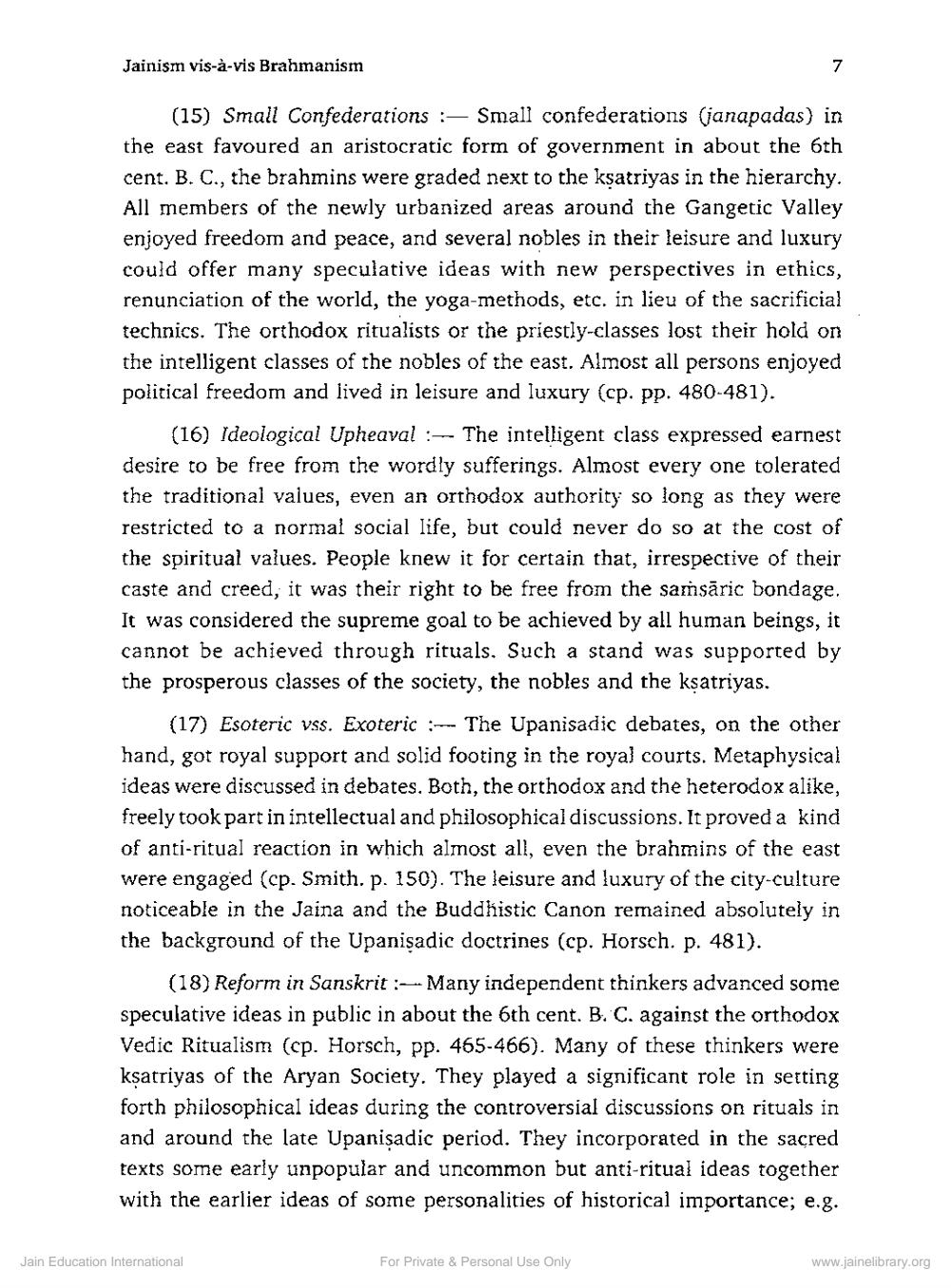Book Title: Jainism vis a vis Brahmanism Author(s): Bansidhar Bhatt Publisher: Z_Nirgranth_Aetihasik_Lekh_Samucchay_Part_1_002105.pdf and Nirgranth_Aetihasik_Lekh_Samucchay_Part_2 View full book textPage 7
________________ Jainism vis-à-vis Brahmanism (15) Small Confederations :- Small confederations (janapadas) in the east favoured an aristocratic form of government in about the 6th cent. B. C., the brahmins were graded next to the ksatriyas in the hierarchy. All members of the newly urbanized areas around the Gangetic Valley enjoyed freedom and peace, and several nobles in their leisure and luxury could offer many speculative ideas with new perspectives in ethics, renunciation of the world, the yoga-methods, etc. in lieu of the sacrificial technics. The orthodox ritualists or the priestly-classes lost their hold on the intelligent classes of the nobles of the east. Almost all persons enjoyed political freedom and lived in leisure and luxury (cp. pp. 480-481). (16) Ideological Upheaval : The intelligent class expressed earnest desire to be free from the wordly sufferings. Almost every one tolerated the traditional values, even an orthodox authority so long as they were restricted to a normal social life, but could never do so at the cost of the spiritual values. People knew it for certain that, irrespective of their caste and creed, it was their right to be free from the samsāric bondage. It was considered the supreme goal to be achieved by all human beings, it cannot be achieved through rituals. Such a stand was supported by the prosperous classes of the society, the nobles and the ksatriyas. (17) Esoteric vss. Exoteric :--The Upanisadic debates, on the other hand, got royal support and solid footing in the royal courts. Metaphysical ideas were discussed in debates. Both, the orthodox and the heterodox alike, freely took part in intellectual and philosophical discussions. It proved a kind of anti-ritual reaction in which almost all, even the brahmins of the east were engaged (cp. Smith. p. 150). The leisure and luxury of the city-culture noticeable in the Jaina and the Buddhistic Canon remained absolutely in the background of the Upanisadic doctrines (cp. Horsch. p. 481). (18) Reform in Sanskrit:- Many independent thinkers advanced some speculative ideas in public in about the 6th cent. B. C. against the orthodox Vedic Ritualism (cp. Horsch, pp. 465-466). Many of these thinkers were ksatriyas of the Aryan Society. They played a significant role in setting forth philosophical ideas during the controversial discussions on rituals in and around the late Upanisadic period. They incorporated in the sacred texts some early unpopular and uncommon but anti-ritual ideas together with the earlier ideas of some personalities of historical importance; e.g. Jain Education International For Private & Personal Use Only www.jainelibrary.orgPage Navigation
1 ... 5 6 7 8 9 10 11 12 13 14 15 16 17 18 19 20 21 22 23 24 25 26 27 28 29 30 31 32 33 34 35 36 37 38 39 40 41 42 43 44 45 46 47
